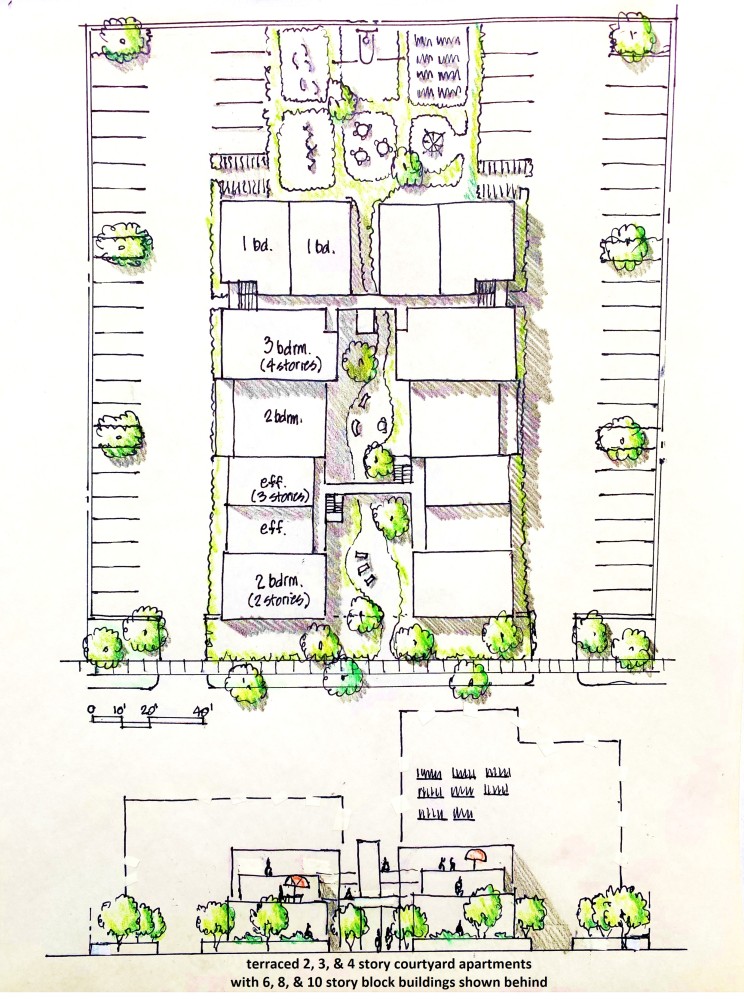
The future lies within our cities, but our cities are crumbling! Cities are home to over 1/2 the world’s population and in 20 years will be home to 2/3rds! They are the focal points of poverty & health, water & energy, food & waste, transportation & congestion, climate change & environmental degradation, innovation & economic growth – with changes in climate, economics, and social media creating a new and ever-changing reality.
So where is this increasing growth and transformation headed? What will managing this growth require? What direction will the rapid shifts in communication take us? If our cities fail, so will we!
The American dream has been focused on ownership and 80% of wealth is created in cities where people find opportunities. Will we continue to enjoy the benefits of cities – the restaurants & cafes, the art galleries & cultural facilities, parks & landscaped environments – without crime, traffic, and pollution?
And the dream of ownership is becoming one of sharing – not me, but us! Will our future experience be increased sharing of resources – shared workspace, shared transportation, shared living quarters? Apartments are shrinking in area with quickly diminishing privacy as developers densify to increase profits! We’re facing an unprecedented scale of planning which we frankly don’t know how to handle with the future of cities and urban design requiring cross-disciplinary integration. What will managing this growth require and what are the barriers? And in our environment, where will the water required to support such growth come from in this time of extended drought?

A healthy city will need to balance economic & resource efficiency – accommodating growth while lowering resource consumption. And even with computers & teleconferencing, face-to-face opportunities will still prevail. But with LA County’s sprawl, enormous distances to jobs with public transportation while also managing childcare is not acceptable.
So how do we keep Santa Monica from also falling deeper into this abyss? How do we stop Developers from “piecemealing” our city which has proven very expensive. There are 5 objectives I feel the City Council should consider to keep Santa Monica from continuing to crumble still further!
- Undertake affordable housing on public property!
- Provide incentives to promote responsible, controlled development on the boulevards!
- Initiate zoning code revisions & incentives to rid the city of these faceless 6-10 story block buildings with in-line balconies reminiscent of computer punch cards.
- A master plan to control our hemorrhaging debt.
- Providing more neighborhood green space by turning segments of streets/alleys into parks.
- A viable approach to affordable housing:
As an architect & planner for more than 50 years, I have been involved in the design of several thousand affordable units – 2, 3 & 4 story terraced courtyard housing primarily on excess, vacant public land. The city, developer, and public all benefited from the significantly reduced land & construction costs!
According to current online records, Santa Monica City owns 10% of the 5,312 acres within city limits, and approximately 10% of that is vacant. If only half of the vacant 531 acres is usable, it would provide 11,700 units at a desirable garden apartment density of terraced 2, 3, & 4 stories! Per the example shown on a one acre site, you could easily build 44 units/acre with surface parking and bicycles instead of subterranean, along with sitting & picnic areas, volleyball & basketball, and gardening & playground areas. Garden apartments with open space compared to the 113 units per acre currently proposed and jammed in over 2 levels of subterranean parking on the Gelson’s site, of which only 10% of the units are considered affordable.
Overall costs could be reduced – land costs of 25-30% would be 0%, low-rise type V construction costs would save 15-20% (especially with the coming digital fabrication of buildings saving on parts, labor, and construction time along with less neighborhood intrusion) and saving 10-15% of financing costs! And reduced permit costs and expedited review could save another 10%.
And over a 15-20 year period, the affordable rents would repay the city its land value, provide a fair return to the developer, and more importantly provide tenant equity leading to apartment ownership after a 15-20 year mortgage is paid off with tenant rents! This would provide housing for approximately 26,000 or 28% of our current population – if this amount of housing is even necessary, which is unlikely given the dire water situation? After +/- 40 years, it’s time to stop going down the wrong street!
- Incentive to promote market rate boulevard development:
In Santa Monica, we have approximately 8 miles of boulevards with approximately 80% being either vacant, surface parking, or 1 story retail with the other 20% primarily 2 stories. Again by offering tax and processing incentives, the vacant properties, parking lots, and 1 story properties could be developed with stepped 2, 3, & 4 story buildings having ground floor meandering sidewalks and courtyards, upper level terracing, and boulevards turned into landscaped parkways with thousands of apartments or condos together with surrounding neighborhoods where residents could walk to jobs, shop, or just relax in the nearby courtyards and mini-parks.
- Zoning Code revisions:
Although the development industry (west coast, east coast, and abroad) has successfully convinced Governor Gavin Newsom and the State legislature to unnecessarily and substantially increase housing across the state with code revisions allowing 6-10 story building heights and decreased property line setbacks along with the demise of R1 zoning, we are still able to offer developers meaningful tax exemptions and streamlined processing procedures to offset this totally unnecessary visual & physical boondoggle.
- The absolute necessity of a citywide Master Plan for our future:
Instead of $5m tentatively budgeted in the pending 2023 SM budget for a master plan for the SM airport, spend a similar amount for a citywide master plan – one that the city in its 138 year history has never had?! Instead, we have juggled and piecemealed development. Let’s not piecemeal our master planning.
What kind of city do we want to become? What should our sources of revenue be? What is the image we would like to project to outsiders? What is the scale, height, and massing appropriate for the city’s image? And will we be a net zero city, and if not, what are our energy goals? Without a master plan, this is a very stupid and expensive way to run a city, especially when the current computer age allows continuous updating!
We can’t continue allowing Developers to rebrand Santa Monica! What is our vision? What are we going to insist our Council do about it?
- Turning segments of residential streets into parks:
For the past 5 years, I’ve been working on and processing my idea for small neighborhood parks in every residential neighborhood throughout the City of Compton and eventually throughout every urban community in the country. In a typical neighborhood of +/- 24-30 residential blocks defined by perimeter arterial streets, an “active” & “passive” park could be built at each end of the neighborhood on the side street of a residential block without interfering with residential or emergency access.
In Compton, a city comparable in size with Santa Monica in area & population, 34 small parks offering a basketball court, playground equipment, community gardening & fitness classes, etc., could be completed for less than $12m total and within an estimated 3 years of design, approval & construction.
C’mon City Council, get your act together and do the job the Residents need & elect you to do! This is not a political job you’ve selected, and it is certainly not a beauty contest you’ve won – this is a planning job!! We can’t continue allowing Developers to rebrand Santa Monica – What is our vision, our future? Are you up to the task???
Ron Goldman FAIA for SMa.r.t.
Santa Monica Architects for a Responsible Tomorrow
Thane Roberts, Architect, Robert H. Taylor AIA, Ron Goldman FAIA, Architect, Dan Jansenson, Architect & Building and Fire-Life Safety Commission, Samuel Tolkin Architect & Planning Commissioner, Mario Fonda-Bonardi AIA & Planning Commissioner, Marc Verville M.B.A, CPA (Inactive), Michael Jolly, AIR-CRE.
For previous articles see www.santamonicaarch.wordpress.com/writing













